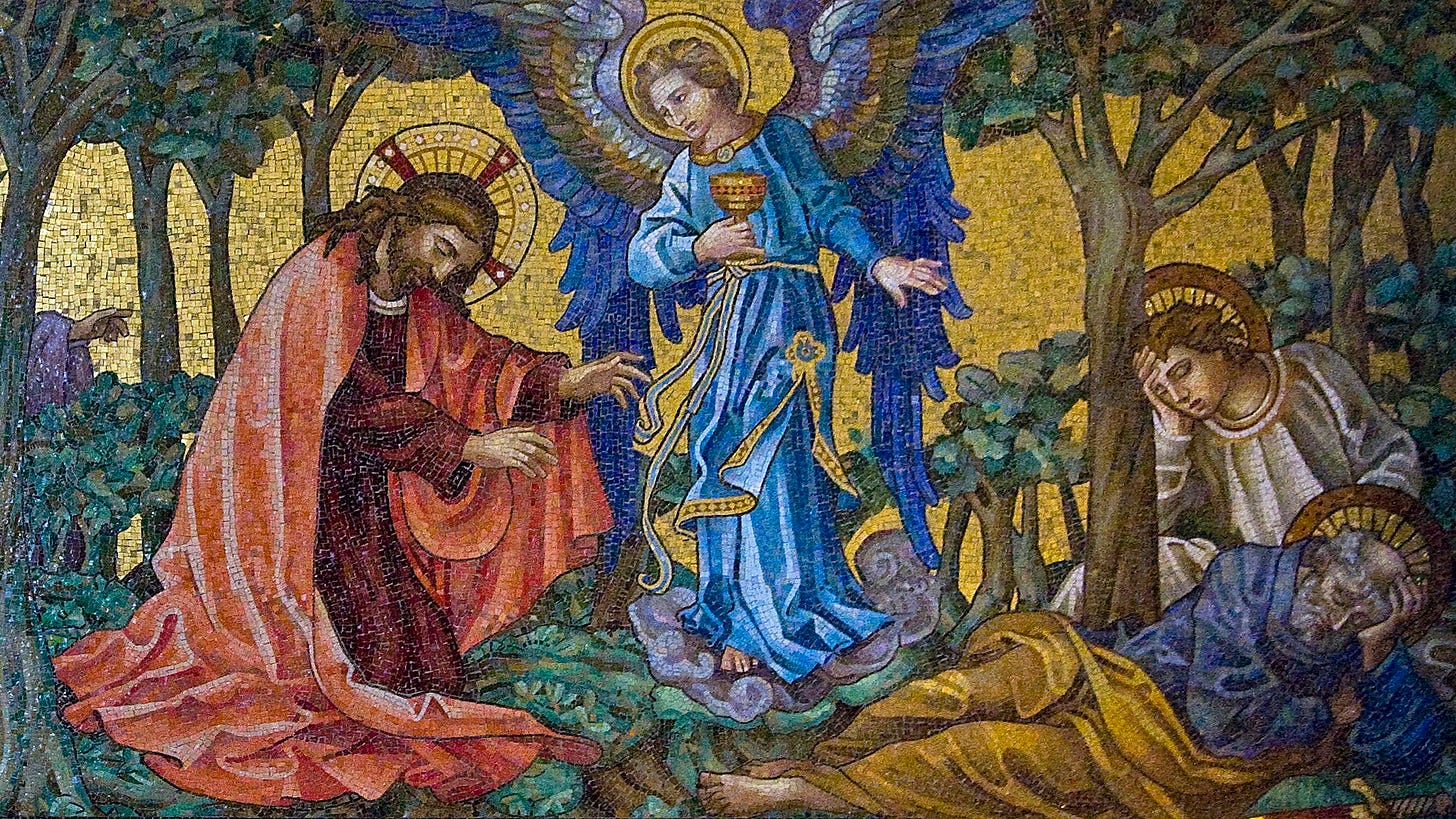Why Palm Sunday’s joy ends at the church door
The triumph of the procession on Palm Sunday does not spill over into the Mass. But why?

The triumph of the procession on Palm Sunday does not spill over into the Mass. But why?
A change of tone on Palm Sunday
In the previous part, we discussed how the Psalms used in the propers of the Mass are understood to give voice to the internal thoughts and feelings of Our Lord. Those used on Passion Sunday (the Sunday before Palm Sunday) revealed a great sense of Christ’s composure during his trial and Passion.
But when Palm Sunday arrives, it reveals something else: sorrow, abandonment, and the chalice of suffering.
The Mass itself is preceded by the blessing of palms and a triumphant procession. Like Christ’s entrance into Jerusalem at the start of Holy Week, this is a moment of joy. The hymns and antiphons are full of joy, according to Christ the royal and messianic titles which he accepted on that day:
Hosanna to the Son of David! Blessed is He that cometh in the Name of the Lord. O King of Israel: Hosanna in the highest!
The Hebrew children bearing olive branches, went forth to meet the Lord, crying out, and saying, Hosanna in the highest.
Glory, praise and honor to Thee, O King Christ, the Redeemer: to whom children poured their glad and sweet hosannas’ song.
But almost immediately after the procession, something changes, and the Church adopts a very different tone.
How the two Passiontide Sundays mirror each other
While the propers of Palm Sunday’s Mass present a very different picture to the composure of Passion Sunday, the Masses mirror each other. Palm Sunday reveals the other side of the mystery: Christ’s internal suffering.
As with Passion Sunday, the Introit calls for God’s deliverance—but where there was previously confidence and almost defiance, there is now expressed sorrow:
Introit: O Lord, remove not thy help to a distance from me; look towards my defence. Save me from the lion’s mouth; and my lowness from the horns of the unicorns.
V. O God, my God, look upon me; why hast thou forsaken me? (Ps. 21)
Where the Gradual previously affirmed that God would deliver Christ, avenge him and subdue his enemies, it now expresses dismay at “the prosperity of sinners”:
Gradual: […] My feet were almost moved; my steps had well nigh slipped. Because I had a zeal on occasion of the wicked, seeing the prosperity of sinners. (Ps. 72)
The tract of Passion Sunday spoke of Christ’s maltreatment by the wicked (but their inability to overcome him) and the ultimate victory of God. In Palm Sunday’s tract, Psalm 21, is sung in full—expressing similar sentiments, but with much greater emphasis given to the sorrows and sufferings of the passion itself.
Where the Gospel of Passion Sunday showed Christ’s mastery in discussion of his opponents, and their inability to lay a finger on him, on Palm Sunday we hear the Passion of St Matthew sung in full. In fact, Palm Sunday is the only day of obligation in which any of the Passion narratives are sung in full—emphasising its importance for the Mass.
Passion Sunday’s offertory sang of praising God “with [his] whole heart”, and the sweetness of God.
But now is heart is now filled with the agony of Gethsemane, as well as the gall and vinegar of the Cross:
Offertory: My heart hath expected reproach and misery. And I looked for one that would grieve together with me, but there was none: and for one that would comfort me, and I found none. And they gave me gall for my food, and in my thirst they gave me vinegar to drink. (Ps. 68)
Finally, this contrast is nowhere clearer than in the two chalices of the communion verses for these Sundays:
Passion Sunday: “This is my body […] this chalice is the new testament in my blood.”
Palm Sunday: “My Father, if this chalice may not pass away, but I must drink it, thy will be done.”
The chalice he offered to his Apostles has become the chalice he drinks alone.
This is no longer just the voice of composure. It is the voice of sorrow.
What kind of man can suffer such agony—yet remain composed, silent, and entirely in control?
This is a WM+ article.
The WM Review is free for readers. This is because we believe these ideas must reach as many people as possible.
However, we also provide WM+ articles—additional material for those who choose to support this work financially. This helps us continue producing serious Catholic research, while ensuring that the main body of material remains accessible for all.
If you want to ensure that this flow of material continues, join WM+ today.
(Clergy and seminarians can contact us for free membership.)



